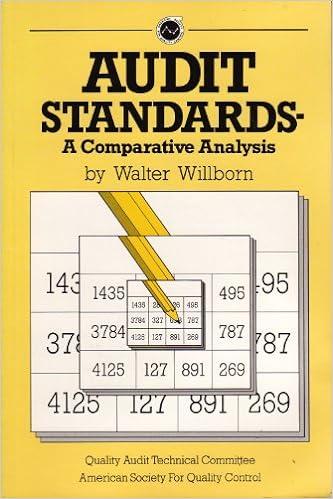Answered step by step
Verified Expert Solution
Question
1 Approved Answer
CC7-1 Accounting for Changing Inventory Costs [LO7-3, LO7-5] In October, Nicole of Nicole's Getaway Spa (NGS) eliminated all existing inventory of cosmetic items. The trouble


Step by Step Solution
There are 3 Steps involved in it
Step: 1

Get Instant Access to Expert-Tailored Solutions
See step-by-step solutions with expert insights and AI powered tools for academic success
Step: 2

Step: 3

Ace Your Homework with AI
Get the answers you need in no time with our AI-driven, step-by-step assistance
Get Started


